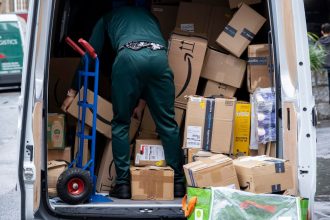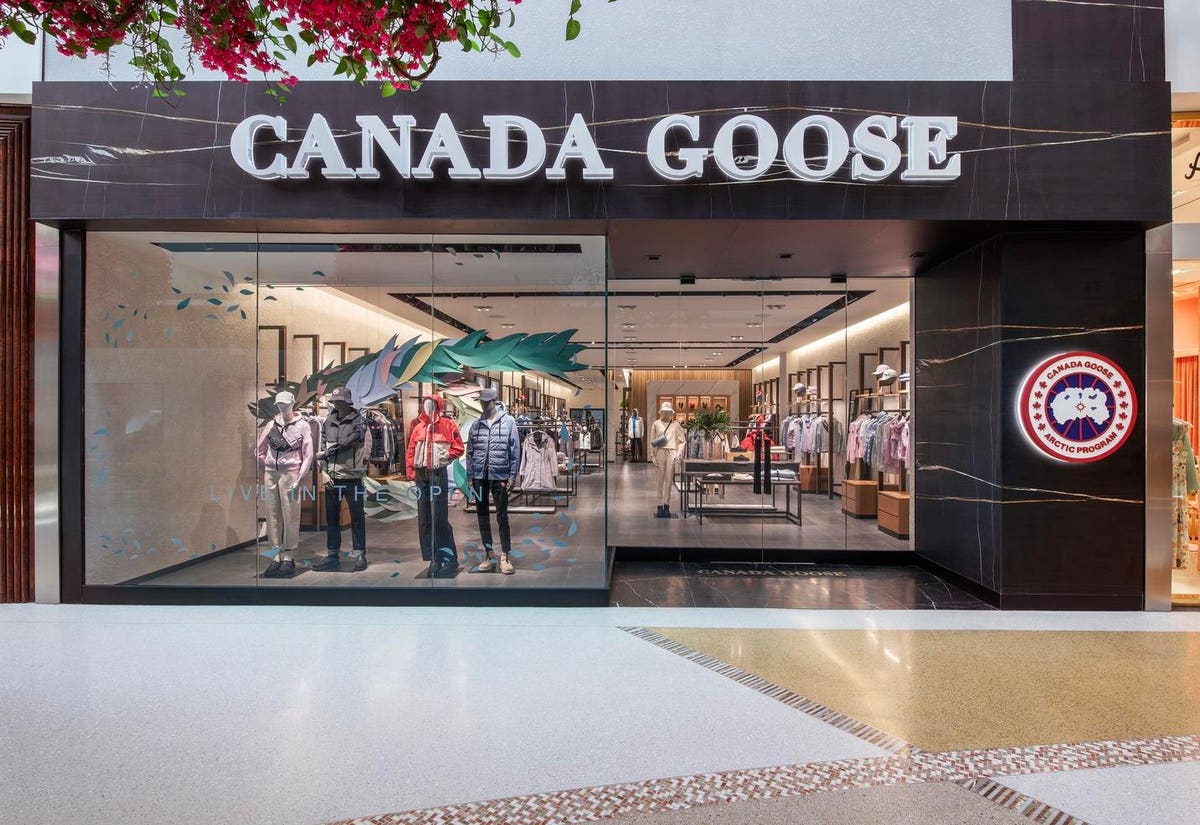Unlike other DTC brands today, Canada Goose started as a manufacturer and owns and runs the majority of the factories that produce its products. Tech companies like Tesla and Shopify have normalized a lack of profit, making growth an arguably more favorable success indicator. However, as the economy has shifted and bankruptcies ensued, the value of profit to shareholders, especially amongst direct-to-consumer (DTC) brands, is likely increasing, making Canada Goose a profitable and growing retailer, a unique DTC retailer.
In the past few years, many DTC brands that have yet to reach profitability, like Casper, Warby Parker, Allbirds, and Stich Fix, have struggled on the public market. However, at the end of its fiscal year in April 2023, Canada Goose had a revenue of about $900 million ($1.2 billion CAD), up 10.8% from the year prior, and its market cap today is about $1.6 billion. For reference, Warby Parker has a market cap of $1.45 billion and ended this year with a revenue of $598 million, up about 10.6% from the previous year. These brands are very different but share similar valuations, but what Canada Goose is doing with its DTC channel makes it uniquely successful.
Staying True To Its Roots.
“We consider ourselves the only Canadian luxury apparel brand. So, we knew we had to do something representing and reflecting that specialness. So when you go into our stores, and you see that Inuit art, that was very purposeful for us to say we don’t want just to be a store with walls – we want it to be a place you learn something about not even our brand, necessarily, but something about that artist or our relationship to the north, which is super important to us,” shared Carrie Baker, President of Canada Goose.
The Canada Goose products are made across various factories, seven of which are in Canada. Inside its original Toronto factory sits over 320 employees and their sewing machines, each dedicated to a different aspect of a product. For instance, one person may sew pockets, while another will add the down filling. But all are handcrafted and thoroughly inspected.
Canada Goose was born in Toronto, and it’s made an effort to stay there, despite the enticing cost benefits of manufacturing abroad; 75% of its products are still produced in Canada. It also recently showed further dedication to its home by moving its more than 500-person headquarters to Toronto’s waterfront, with a view of Lake Ontario, designed with Canada in mind by M Moser Associates.
Meanwhile, direct competitors like The North Face have evolved over the years. At one point, it had that edge similar to Canada Goose and even pursued streetwear partnerships with celebrities. But, more recently, it moved its headquarters to Denver from San Francisco, leaving the home of its establishment.
Balancing The Consumer And The Business.
A company cannot be solely focused on its numbers at the cost of experience, especially in today’s retail world, where consumers expect quality experiences, both online and in-store.
“We’re performance luxury, we’re always talking about the product’s function first, but we’re also very inclusive. We want a warm welcome; we want someone to leave better than when they came in, whether they’re more knowledgeable or more familiar with the brand, or they just had a great experience with one of our ambassadors,” stated Baker.
In 2018, Canada Goose launched its first experiential store where consumers could try the parkas in a cold room. Unlike some other brands, the experiential aspect was necessary for shoppers to trust the product and to feel confident it would keep them warm. Arc’teryx, a competitor, also adopted this in some of its stores; its first global flagship, which opened in 2020 in Shanghai, featured a “rain room,” allowing customers to test the features of the GORE-TEX products.
Another recent initiative of Canada Goose was adding a resale platform called Generations. From a consumer standpoint, this shows sustainability commitment, something it’s been criticized for in the past leading it to stop using fur. And from a financial perspective, it recaptures consumers and introduces a new revenue stream. Resale has become relatively common, with Patagonia being one of the first outdoor brands to launch a program.
Increasing The Store Channel
Canada Goose has 55 stores globally, aiming to almost triple its store count by 2028. This year it continues its expansion in the US and is adding Australia to its list. Its growth in the US includes nine new locations, one of which is a pop-up in Anchorage, Alaska’s 5th Ave Mall. The company is known to attract luxury, usually tourist consumers, but it still serves that more industrial extreme cold-weather shopper – the shopper this new pop-up aims to attract.
Beyond its pure store expansion, the brand has begun to see the value of its stores as more than an experiential touchpoint. 70% of its revenue currently comes from its 55 stores, despite the first opening about six and a half years ago.
“When we go into malls or areas where other people are selling us, everyone tends to get a lift. I wouldn’t say it’s 50%, but single digits or low double digits,” shared Baker, adding that “this is where the curated assortment comes into it. It’s so key because we can’t all be offering the same thing and expect to grow, but if we carefully choose who gets exclusives amongst our wholesale partners, you get to say, ‘Oh, we don’t have that, but go over there.’ So, they [the channels] complement each other.” The merchandising aspect of channels is another element vital to a successful omnichannel strategy. The brand recently partnered with Fred Segal, its exclusive wholesale partner for its Rokh and Matt McCormick collection that launches in early September.
Canada Goose is a brand with a lot of history, and it continues to stay true to those roots while drawing a modern customer with its newer products and experiences. Financially, it stands out, but it still has the opportunity to grow at a higher rate and improve its cash flow (which was impacted last year primarily due to Covid-19 in Asia). However, it appears to be on the right track with its significant store growth plans and introduction of various new product lines.
Read the full article here





